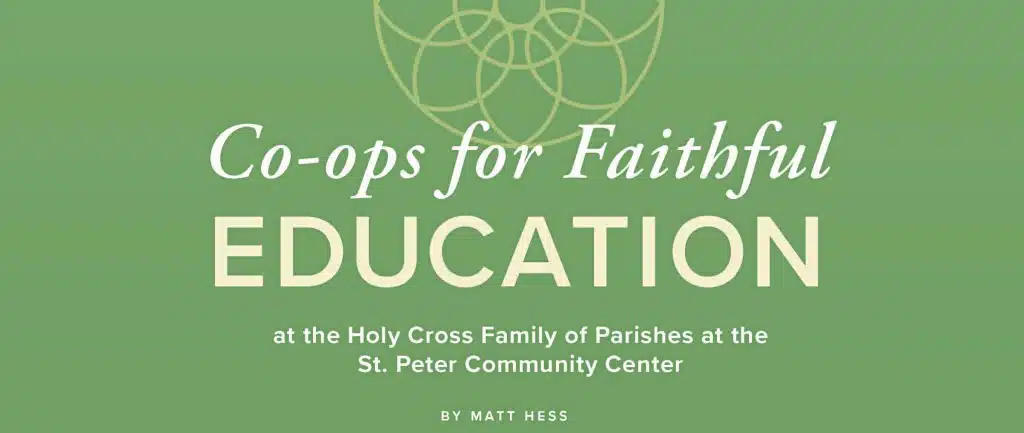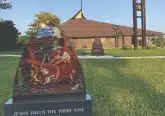Co-Ops for Faithful Education

Late summer means it is time to go back to school. While some students are packing up their backpacks, grabbing their brown paper lunch bags and heading out the door to catch the bus, others have an easier commute. Some young people instead head to the kitchen table to begin school at home with siblings. They, too, learn the “three Rs” of reading, writing, and arithmetic, but also the most important R: religion.
In our archdiocese’s northern area and across the country, Catholic homeschool families, like many other groups who homeschool, have formed cooperatives (or co-ops). These enable families to share educational resources, contribute to group projects and build community among the children and parents.
A co-op of nine local homeschool families found a home in the Holy Cross Family of Parishes at the St. Peter Community Center, the parish’s former school. They will gather there on Fridays this fall to work together to educate their youth, collaborating on science projects, artwork, sports and literature—all in a way that relates to the faith.
Catholicism manifests itself most prominently at the co-op in the presence of a priest, often Father Alexander Witt, the pastor. After morning Mass, one of the Parish Family’s four priests teaches apologetics to the young people.
“We are so blessed to have Father Witt advocating for the co-op,” says Julie Link, the St. Peter Co-op president for this school year and whose children will begin their third year in this co-op.
With St. Peter Church just across the street, Fridays include a Holy Hour led by a priest. This is time dedicated for the children to encounter Jesus in the Blessed Sacrament and to become comfortable with silence and learn to pray. The students also learn about the sanctuary and sacristy by serving at Benediction.
Former parish vicars helped with science project rockets and tossed frisbees on the playground with the youth. Father Witt is often seen holding a baby for a mother who needs a break or to check on other children at the co-op.
The parents invite a sister from the Children of Mary to class each year to provide another example of religious life. For girls, especially those who might not meet a religious sister otherwise, this offers time to consider a call to serve God in consecrated life. Through the involvement of these religious, students experience the joy of religious life while also learning the faith from a well-formed source.
The community formed by the St. Peter Co-op opens opportunities each family could not do on their own. The shared teachers, materials and church buttress their education at home and allows homeschooling to flourish in the Fort Recovery and Coldwater areas. “Each year we grow with our children, meeting them where they need to be met,” said Link. “We take it a year at a time.”
While not every family involved in the St. Peter Co-op has been Catholic, the sense of community and the common values they espouse are important to participants. Parents feel called to take an active role in their children’s education and are building a community to help in that development.
For Paige Schulze, whose family has been a part of the co-op since its beginning four years ago, the co-op shows “there are other kids who love Jesus like you do.” The community reinforces “that faith and education go together and are not two separate things,” she said.
As our students start a new school, it is good to recall that faith is an important component in our youth’s formation. Having a community to learn with and model Catholic values is vital. The St. Peter Co-op exemplifies Catholic parents putting in effort to build community and take seriously the call to form young disciples who radiate Christ in their parishes and our archdiocese.
This article appeared in the August 2024 edition of The Catholic Telegraph Magazine. For your complimentary subscription, click here.













